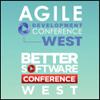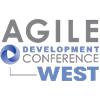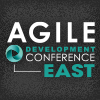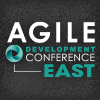 |
Enterprise Lean-Agile: It’s More Than Scrum
Slideshow
Introducing agile development into a large enterprise is like creating a bubble of sanity in the midst of bedlam. Unless the sanity spreads, the effort is ultimately frustrating, frustrated—and fails. Jeff Marr describes the web of the enterprise ecosystem and presents strategies to build...
|
Jeff Marr, Cisco
|
 |
Lean Management: Lessons from the Field
Slideshow
Agile development methods such as Scrum, XP, and kanban have achieved notable success in improving speed to value, reducing waste, and raising customer and team satisfaction. Successful practitioners worldwide have cut development times, improved product quality, and reduced development cost.
|
Sanjiv Augustine, LitheSpeed
|
 |
Keynote: Lean Software Delivery: Synchronizing Cadence with Context Daily, we are told that adopting agile, PaaS, DevOps, crowdsourced testing, or any of the myriad of current buzzwords will help us deliver better software faster. However, for the majority of software development organizations, naïve agile transformations that don’t look beyond the needs...
|
Mik Kersten, Tasktop
|
 |
An Interview with Mik Kersten: ADC-BSW 2013 Interview Series
Video
Committed to covering the latest trends and approaches for anyone investigating or implementing agile development practices, processes, technologies, and leadership principles, Agile Development & Better Software Conference West offers their 2013 interview series.
|
Mik Kersten, Tasktop
|
 |
STARCANADA 2013 Keynote: Lighting Strikes the Keynotes
Video
Lightning Talks are a popular part of the STAR conferences. Lightning Talks consists of a series of five-minute talks by different speakers within one presentation period and are an opportunity for speakers to deliver their single biggest bang-for-the-buck idea in a rapid-fire presentation.
|
Lee Copeland, Software Quality Engineering
|
 |
Better Software Conference East 2012: Lean Development Practices for Enterprise Agile
Slideshow
Enterprise agile initiatives require strategic, portfolio, product, and team perspectives at all levels. Alan Shalloway has found that lean software development principles help integrate all of these perspectives into a cohesive, actionable whole. With a combination of lean science, lean management, lean team, and lean learning methods, Alan shows how your organization can prepare for enterprise agility. Lean science focuses on the “laws” present in all software development projects. Lean management empowers executives to contribute to the context within which teams can flourish. Lean team methods are actualized in Kanban approaches. Lean learning empowers everyone in the organization to improve his skills and practices.
|
Alan Shalloway, Net Objectives
|
 |
Ready and Fit: Adopting Agile in Highly Regulated Environments
Slideshow
If you live and work in a highly regulated environment (HRE)-medical devices, DoD and its contractors, nuclear energy, or other life-critical systems-this session is for you. For the past three years, the SEI has been researching agile and lean adoptions in the US Department of Defense. Suzanne Miller presents the organizational and cultural factors they identified as most important for development organizations to demonstrate when embarking on an agile adoption program. In the SEI's technology transition research, Suzanne and her team found that the more closely an organization meets the readiness and fit criteria, the more likely it is that the adoption will succeed. Suzanne discusses the risks and challenges that agile adoption presents to HREs, and presents ways to mitigate risks and overcome challenges.
|
Suzanne Miller, Software Engineering Institute
|
|
|
The Lean and Agile Way into the Cloud
Slideshow
Advances in technologies-virtualization, cheap storage, high-speed networks-and a growing comfort with the Internet's security and reliability are leading to widespread adoption of cloud computing. Still, traditional software development methodologies are unable to make full use of the power and flexibility cloud computing offers. Yash Talreja describes how he helped his clients implement lean and agile software development methodologies to take full advantage of cloud computing. Find out how a social networking site and a branded instant messaging company combined the ease and economy of cloud-based system installation, management, and maintenance with the speed of lean and agile practices. They were able to simplify the deployment and upgrade process offered by the cloud, and combine the benefits of a tight feedback loop between developers and end-users.
|
Yash Talreja, The Technology Gurus
|
|
|
The Science of Lean Science is the building and organizing of knowledge into testable explanations and predictions about the world; lean is an approach which recognizes and leverages many scientific discoveries to enable faster flow, higher value, and greater capability. When thinking about opportunities for continuous improvement, science and lean should go hand in hand. Karl Scotland explores some of the science behind lean-from mathematics to neuroscience-in order to explain why and predict how various practices can have a positive impact on the way we work. Gain a deeper understanding of both the science of lean and how to take a scientific approach to learning in order to reap the benefits of paying attention to people, process, and economics. Leave with richer insights into why and how lean approaches work, and the ability to apply the science-and a scientific approach-to your own teams and organizations.
|
Karl Scotland, Rally Software Development
|
|
|
Application Lifecycle Management Imperatives Ever growing software development needs and faster delivery cycles coupled with flat or shrinking IT budgets have brought many organizations to new agile and lean practices. Together, these disruptions are causing a sea of change in the application lifecycle management (ALM) landscape. Although management tools aren’t an explicit focus for most development teams, choosing the right tools for enterprise development is an important factor in keeping everyone productive. Monica Luke discusses the five key imperatives for ALM implementations: in-context collaboration, accelerating time to delivery with real-time planning, improving quality with lifecycle traceability, refining predictability with development intelligence, and reducing costs through continuous improvement. For each imperative, Monica offers concrete examples and lessons learned from real-world implementations. Don’t get lost in the weeds with an ALM tool.
|
Monica Luke, IBM Rational Software
|

